The pink calla lily is a beautiful and delicate flower that adds an eye-catching pop of color to any garden. Growing this exquisite plant requires special care, though, with the right knowledge and guidance, you can have it thriving in no time.
In this article, we’ll discuss everything from soil types and watering requirements to pruning and propagating the plant. With our comprehensive guide, you’ll be able to successfully grow and maintain a beautiful pink calla lily in your own garden!

Pink Calla Lily Plant Frequently Asked Questions
Do pink calla lilies like sun or shade?
Pink calla lilies thrive in partially shaded areas, making them a versatile plant for both sun and shade. While they can tolerate some direct sunlight, it is best to provide them with filtered or dappled light to prevent their delicate blooms from scorching. However, in hotter climates, they may appreciate some afternoon shade to protect them from excessive heat.
Is the calla lily drought-tolerant?
Yes, the calla lily is known for its ability to withstand periods of drought. Its thick, fleshy rhizomes store water, allowing the plant to survive in dry conditions. However, it is important to note that while the calla lily can tolerate drought, it still requires regular watering to thrive and produce healthy blooms
Choosing The Right Soil Type for The Pink Calla Lily Plant
Choosing the right soil type for the pink calla lily plant is essential for its successful growth. The pink calla lily requires a well-draining, loose soil with an acidic pH between 5.5 and 6.5 to thrive. To ensure that the soil retains moisture, compost or peat moss can be added to help retain moisture and keep the plant healthy. Adding organic matter such as leaf mold or manure can be added to improve drainage and aeration; this will help promote better air circulation and root development in the soil.
If you have clay soils, adding sand can also help with drainage, making it easier for your pink calla lilies to absorb water and nutrients from the soil. When selecting a soil type for your pink calla lilies, it’s important to keep these requirements in mind so that you’re providing optimal growing conditions for your plants.
It’s also beneficial to test the pH levels of your soil before planting; too much or too little acidity can cause problems with growth and flowering of your plant. Taking time to select the correct soil type will result in strong, healthy growth of your pink calla lilies throughout their life cycle!
Watering requirements for the pink calla lily plant
Watering your pink calla lily plants is essential for optimal growth and development. It’s important to maintain a balance between providing enough water and avoiding overwatering or root rot, which could be fatal for the plant. The amount of water needed will depend on the climate and season; however, as a general rule, watering should occur when the top two inches of soil are dry. During hotter months in summer, it might be necessary to water more often than other times of the year.
To check whether your plant requires hydration, simply feel the soil with your finger – if it feels dry, then it’s time to pour some water into its pot! Tap water or rainwater at room temperature are both suitable options; distribute moisture slowly at the base of each stem and make sure that all sides of each pot are adequately moistened. Avoid letting standing water accumulate around the stem as this might cause root rot.
In wintertime when temperatures drop, you may need to reduce watering frequency since low temperatures can slow down evaporation rates leading to over-saturation of soil. These few tips will help keep your pink calla lily plants healthy and flourishing throughout their life cycle. Be mindful not to provide too much or too little irrigation; both extremes can adversely affect growth rates and flower production. Keep an eye out for signs such as wilting leaves and adjust accordingly; this simple step could mean all the difference!
Sunlight Requirements For The Pink Calla Lily Plant
Sunlight is an essential requirement for the successful growth of the pink calla lily plant. It needs at least 6 hours of direct sunlight each day, and it is best to place the plant in an area that gets bright, indirect light for most of the day. If kept indoors, readers might need to use a grow light to supplement natural sunlight.
It’s important to be aware that too much direct sunlight can cause burning of the petals and leaves, so if planted outdoors, it should be placed in a sheltered area away from strong winds and direct sunlight. When planting outdoors, it’s also important to choose a spot where there is protection from extreme temperatures fluctuations.
When bringing plants indoors temporarily or on cloudy days, be sure to place them near a window that receives some natural light or use a grow lamp if needed. Additionally, try rotating your plants regularly so they receive equal amounts of light on all sides which will facilitate even growth and flowering.
The pink calla lily prefers warm climates but can tolerate some shade as well. In areas with cooler climates during summer months like northern regions or higher altitudes, it may be necessary to provide additional shade or cover for your plant during peak hours of sunshine. With this information, readers will have all they need to ensure their pink calla lily plant is receiving enough sunlight for it to thrive!
Fertilizing the Pink Calla Lily Plant
Fertilizing is an essential part of growing a healthy pink calla lily plant. The ideal fertilizer for this plant is a 10-10-10 formula, which provides the right balance of nitrogen, phosphorus, and potassium. This balance helps to promote healthy leaf growth and flowering. During the spring and summer months when the plant is actively growing, fertilizing should be done every two weeks with either organic or synthetic fertilizers. In the fall and winter months, fertilization should be reduced to once per month as the rate of growth slows down during these seasons.
Organic fertilizers such as compost are an excellent alternative to synthetic fertilizers. When using a synthetic fertilizer always read and follow the instructions provided on the label so that you don’t over-fertilize your plants. It is important to note that too much fertilizer can lead to root burn which can damage or even kill your pink calla lily plant. Additionally, you should avoid getting fertilizer on the leaves or flowers as it can cause discoloration or burn them altogether.
Another great way to make sure your pink calla lily plant is receiving enough nutrients for strong growth is by mulching around its base with organic material such as bark chips or shredded leaves. Mulching helps keep weeds at bay, retains moisture in soil, improves soil texture, and supplies slow release nutrients over time too!
By following these simple tips on selecting appropriate soil type, watering requirements, sunlight exposure and proper fertilization readers can ensure their pink calla lily plant stays healthy and thrives for many years to come!
Pruning and Propagating the Pink Calla Lily Plant
Pruning and propagating the pink calla lily plant are essential steps to ensure that it remains healthy and grows to its fullest potential. Pruning should be done in the spring, when the plant is actively growing, and any dead or yellowing leaves should be removed. This will help promote new growth and encourage more vibrant blooms.
Propagation of the pink calla lily can be done through division of a mature plant or by planting seeds in moist soil and keeping them in a warm, sunny area until they germinate. Division is much quicker than propagation through seed, but either method will result in more plants. It’s important to ensure that each segment has at least one bud for successful division or propagation.
When propagating from seed, make sure you use fresh seeds collected from healthy plants in late summer or early fall. The seeds should be planted 1/4 inch deep into moist soil and kept warm with temperatures between 68°F – 86°F (20°C – 30°C). They should also receive indirect sunlight for best results, although some species may require full sun exposure for germination. Once sprouted, keep an eye on moisture levels so that they don’t dry out too quickly as this could cause the young plants to die off before reaching maturity.
It’s also important to regularly fertilize both mature and newly propagated pink calla lilies during their active growing period (spring to fall). A balanced fertilizer with equal amounts of nitrogen, phosphorous and potassium (10-10-10) should be used once every two weeks during these months as this will provide essential nutrients for optimal growth and flower production. In wintertime, fertilizing can be reduced significantly since growth slows down during this period.
By following these pruning and propagation tips you can ensure that your pink calla lily plant remains healthy and continues to thrive season after season!
Common Problems When Growing the Pink Calla Lily Plant
The pink calla lily plant is a beautiful and delicate flower that can be tricky to grow. While it is not impossible, there are some common problems that can arise if the right conditions are not met.
Inadequate sunlight is one of the most common issues associated with growing the pink calla lily plant. To thrive, these pink house plants need at least 6 hours of direct sunlight each day, but too much direct sunlight can burn their petals and leaves. It’s best to place them in an area with bright, indirect light for most of the day or provide additional shade or cover during peak hours of sunshine.
Poor drainage and overly wet soil can also cause problems for this plant. The roots may rot if they sit in waterlogged soil for too long so it’s important to make sure your pot has adequate drainage holes and use a well-draining soil mix. Additionally, overwatering should be avoided as it can lead to weak growth and yellow leaves due to nutrient deficiency from waterlogged roots.
High humidity levels can also cause issues for the pink calla lily plant as they are prone to powdery mildew which causes white patches on the stem and leaves. If you live in an area with high humidity levels, make sure your plant has enough air circulation by providing space between other plants or using fans over the foliage.
Underfeeding or overfeeding this plant will also bring about problems such as pale foliage, root burn and burnt or discolored foliage due to excess nitrogen found in synthetic fertilizers. It’s important to use a 10-10-10 fertilizer formula during its active growing period (spring to fall) but reduce fertilization frequency in wintertime when temperatures are lower as this will slow down evaporation rates.
Organic fertilizers such as compost can be used instead of synthetic fertilizer along with mulching of organic material which helps retain moisture while providing slow release nutrients throughout the year.
By understanding these potential issues associated with growing the pink calla lily plant, readers will have all they need to successfully grow this stunning flower without any major problems arising along the way!
Conclusion
The pink calla lily is a beautiful and unique flower to add to any garden. In order to ensure success in growing this plant, one must take into account its requirements for light, soil drainage and air circulation. With the correct fertilizer formula (10-10-10) applied during the active growth period (spring to fall), proper pruning of dead or yellowing leaves as well as being aware of possible issues such as inadequate sunlight, poor drainage and high humidity levels, readers can ensure their plants stay healthy and vibrant for years.
To further enhance your experience with growing these lovely flowers, additional information on pests or diseases affecting them as well as how to overwinter them properly indoors during cold climates can help increase their longevity. If you have any questions about growing your own pink calla lilies, please do not hesitate to contact us! We would love the opportunity to answer your inquiries and provide more information on caring for this magnificent species.
By following this simple guide along with some extra research if needed, readers will be able to successfully grow the stunning pink calla lily plant in their garden or other outdoor space of choice. With just a bit of patience and care it is easy to create an amazing display that will last season after season!
Other Pink House Plants
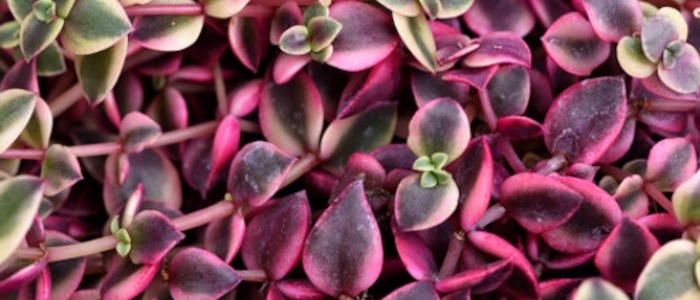


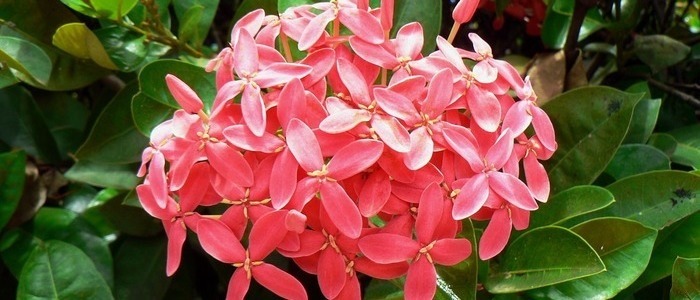

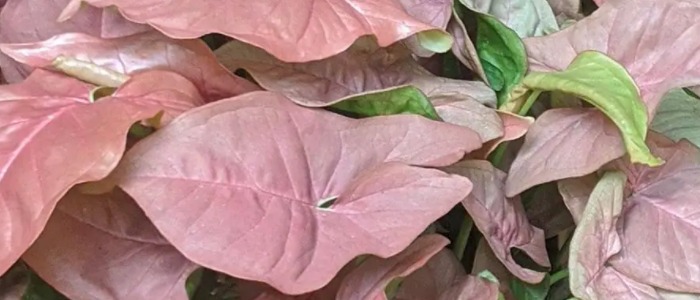
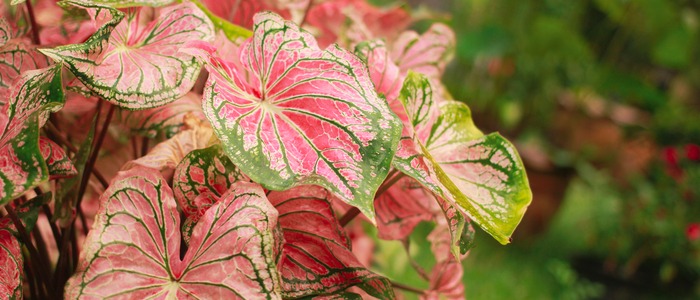
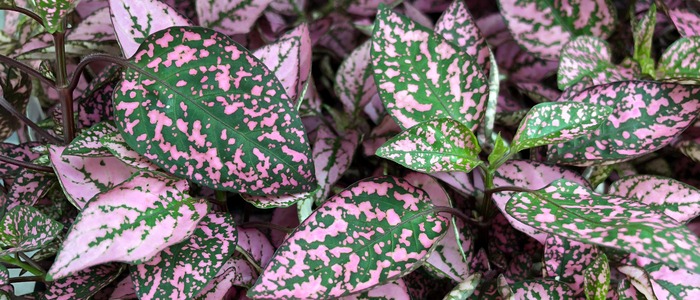




Pink Coleus
Aechmea Fasciata Plant
Cryptanthus


Kalanchoe Pink Butterflies
strawberry begonia